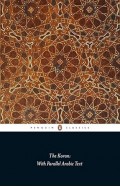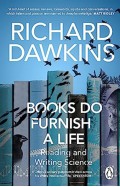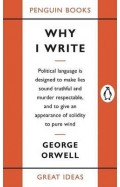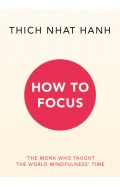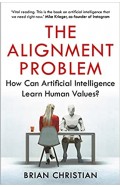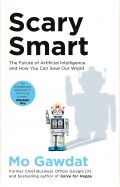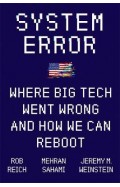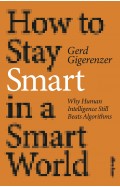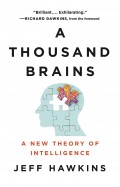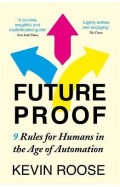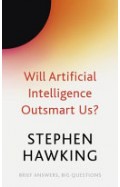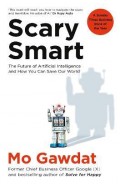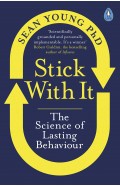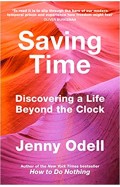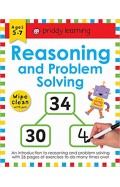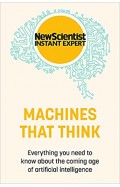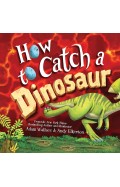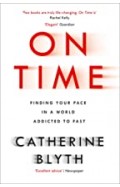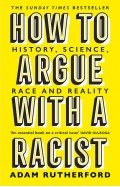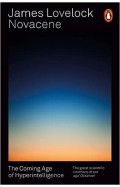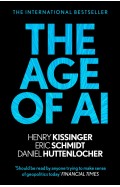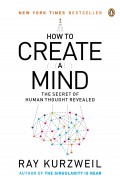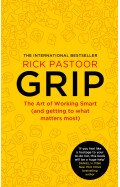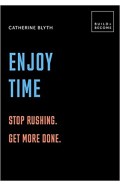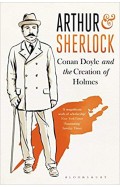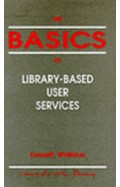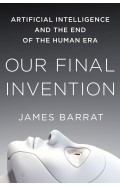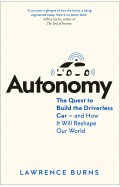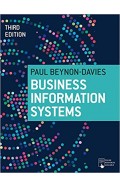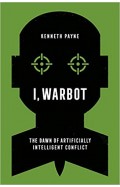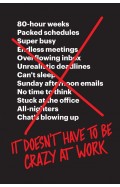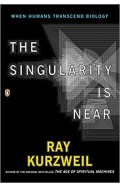- Home
- Innovation and Technology
- Artificial Intelligence
- How We Learn: The New Science of Education and the Brain
How We Learn: The New Science of Education and the Brain
By: Stanislas Dehaene
-
Rs 2,515.50
- Rs 2,795.00
- 10%
You save Rs 279.50.
Due to constant currency fluctuation, prices are subject to change with or without notice.
Humanity's greatest feat is our incredible ability to learn. Even in their first year, infants acquire language, visual and social knowledge at a rate that surpasses the best supercomputers. But how, exactly, do our brains learn?
In How We Learn, leading neuroscientist Stanislas Dehaene delves into the psychological, neuronal, synaptic and molecular mechanisms of learning. Drawing on case studies of children who learned despite huge difficulty and trauma, he explains why youth is such a sensitive period, during which brain plasticity is maximal, but also assures us that our abilities continue into adulthood. We can all enhance our learning and memory at any age and 'learn to learn' by taking maximal advantage of the four pillars of the brain's learning algorithm: attention, active engagement, error feedback and consolidation.
The human brain is an extraordinary machine. Its ability to process information and adapt to circumstances by reprogramming itself is unparalleled, and it remains the best source of inspiration for recent developments in artificial intelligence. How We Learn finds the boundary of computer science, neurobiology, cognitive psychology and education to explain how learning really works and how to make the best use of the brain's learning algorithms - and even improve them - in our schools and universities as well as in everyday life.
Humanity's greatest feat is our incredible ability to learn. Even in their first year, infants acquire language, visual and social knowledge at a rate that surpasses the best supercomputers. But how, exactly, do our brains learn?
In How We Learn, leading neuroscientist Stanislas Dehaene delves into the psychological, neuronal, synaptic and molecular mechanisms of learning. Drawing on case studies of children who learned despite huge difficulty and trauma, he explains why youth is such a sensitive period, during which brain plasticity is maximal, but also assures us that our abilities continue into adulthood. We can all enhance our learning and memory at any age and 'learn to learn' by taking maximal advantage of the four pillars of the brain's learning algorithm: attention, active engagement, error feedback and consolidation.
The human brain is an extraordinary machine. Its ability to process information and adapt to circumstances by reprogramming itself is unparalleled, and it remains the best source of inspiration for recent developments in artificial intelligence. How We Learn finds the boundary of computer science, neurobiology, cognitive psychology and education to explain how learning really works and how to make the best use of the brain's learning algorithms - and even improve them - in our schools and universities as well as in everyday life.
How We Learn: The New Science of Education and the Brain
By: Stanislas Dehaene
Rs 2,515.50 Rs 2,795.00 Ex Tax :Rs 2,515.50
Zubin Mehta: A Musical Journey (An Authorized Biography)
By: VOID - Bakhtiar K. Dadabhoy
Rs 892.50 Rs 1,050.00 Ex Tax :Rs 892.50
Books do Furnish a Life: An electrifying celebration of science writing
By: Richard Dawkins
Rs 2,375.75 Rs 2,795.00 Ex Tax :Rs 2,375.75
Complete English as a Foreign Language: Teach Yourself
By: Sandra Stevens
Rs 1,525.75 Rs 1,795.00 Ex Tax :Rs 1,525.75
Genius Makers : The Mavericks Who Brought A.I. to Google, Facebook, and the World
By: Cade Metz
Rs 2,970.75 Rs 3,495.00 Ex Tax :Rs 2,970.75
The Alignment Problem - How Can Machines Learn Human Values?
By: Brian Christian
Rs 1,950.75 Rs 2,295.00 Ex Tax :Rs 1,950.75
Scary Smart: The Future of Artificial Intelligence and How You Can Save Our World
By: Mo Gawdat
Rs 3,225.75 Rs 3,795.00 Ex Tax :Rs 3,225.75
System Error : Where Big Tech Went Wrong and How We Can Reboot
By: Rob Reich
Rs 1,947.50 Rs 3,895.00 Ex Tax :Rs 1,947.50
How to Stay Smart in a Smart World: Why Human Intelligence Still Beats Algorithms
By: Gerd Gigerenzer
Rs 2,797.50 Rs 5,595.00 Ex Tax :Rs 2,797.50
A Thousand Brains - A New Theory of Intelligence
By: Jeff Hawkins
Rs 4,497.50 Rs 8,995.00 Ex Tax :Rs 4,497.50
Futureproof - 9 Rules for Humans in the Age of Automation
By: Kevin Roose
Rs 1,440.75 Rs 1,695.00 Ex Tax :Rs 1,440.75
Will Artificial Intelligence Outsmart Us?
By: Stephen Hawking
Rs 1,255.50 Rs 1,395.00 Ex Tax :Rs 1,255.50
Scary Smart : The Future of Artificial Intelligence and How You Can Save Our World
By: Mo Gawdat
Rs 2,515.50 Rs 2,795.00 Ex Tax :Rs 2,515.50
Books do Furnish a Life: An electrifying celebration of science writing
By: Richard Dawkins
Rs 2,375.75 Rs 2,795.00 Ex Tax :Rs 2,375.75
Complete English as a Foreign Language: Teach Yourself
By: Sandra Stevens
Rs 1,525.75 Rs 1,795.00 Ex Tax :Rs 1,525.75
Stick with It: The Science of Lasting Behaviour
By: Dr Sean Young
Rs 1,440.75 Rs 1,695.00 Ex Tax :Rs 1,440.75
Scary Smart: The Future of Artificial Intelligence and How You Can Save Our World
By: Mo Gawdat
Rs 3,225.75 Rs 3,795.00 Ex Tax :Rs 3,225.75
Futureproof - 9 Rules for Humans in the Age of Automation
By: Kevin Roose
Rs 1,440.75 Rs 1,695.00 Ex Tax :Rs 1,440.75
Scary Smart : The Future of Artificial Intelligence and How You Can Save Our World
By: Mo Gawdat
Rs 2,515.50 Rs 2,795.00 Ex Tax :Rs 2,515.50
On Time: Finding Your Pace in a World Addicted to Fast
By: Catherine Blyth
Rs 2,035.75 Rs 2,395.00 Ex Tax :Rs 2,035.75
Will Artificial Intelligence Outsmart Us?
By: Stephen Hawking
Rs 1,255.50 Rs 1,395.00 Ex Tax :Rs 1,255.50
The Wires of War - Technology and the Global Struggle for Power
By: Jacob Helberg
Rs 3,735.75 Rs 4,395.00 Ex Tax :Rs 3,735.75
How to Argue With a Racist: History, Science, Race and Reality
By: Adam Rutherford
Rs 2,065.50 Rs 2,295.00 Ex Tax :Rs 2,065.50
Novacene - The Coming Age of Hyperintelligence
By: James Lovelock
Rs 2,335.50 Rs 2,595.00 Ex Tax :Rs 2,335.50
Arthur and Sherlock: Conan Doyle and the Creation of Holmes
By: Michael Sims
Rs 1,997.50 Rs 3,995.00 Ex Tax :Rs 1,997.50
The Age of AI: "THE BOOK WE ALL NEED"
By: Henry A. Kissinger
Rs 2,515.50 Rs 2,795.00 Ex Tax :Rs 2,515.50
How to Create a Mind: The Secret of Human Thought Revealed
By: Ray Kurzweil
Rs 2,800.75 Rs 3,295.00 Ex Tax :Rs 2,800.75
Grip: The art of working smart (and getting to what matters most)
By: Rick Pastoor
Rs 2,460.75 Rs 2,895.00 Ex Tax :Rs 2,460.75
The Coming Wave - Technology, Power and the Twenty-First Century's Greatest Dilemma
By: Mustafa Suleyman
Rs 3,595.50 Rs 3,995.00 Ex Tax :Rs 3,595.50
Enjoy Time: Stop rushing. Get more done
By: Catherine Blyth
Rs 1,447.50 Rs 2,895.00 Ex Tax :Rs 1,447.50
Arthur & Sherlock: Conan Doyle and the Creation of Holmes -
By: Michael Sims
Rs 1,062.50 Rs 1,250.00 Ex Tax :Rs 1,062.50
The Basics of Library-based User Services
By: Kenneth Whittaker
Rs 1,798.40 Rs 4,496.00 Ex Tax :Rs 1,798.40
Our Final Invention: Artificial Intelligence and the End of the Human Era
By: James Barrat
Rs 4,755.75 Rs 5,595.00 Ex Tax :Rs 4,755.75
Autonomy: The Quest to Build the Driverless Car - And How It Will Reshape Our World
By: Lawrence Burns
Rs 1,015.75 Rs 1,195.00 Ex Tax :Rs 1,015.75
I, Warbot - The Dawn of Artificially Intelligent Conflict
By: Kenneth Payne
Rs 3,395.75 Rs 3,995.00 Ex Tax :Rs 3,395.75
The Singularity is Near: When Humans Transcend Biology
By: Ray Kurzweil
Rs 4,945.50 Rs 5,495.00 Ex Tax :Rs 4,945.50
How AI Ate the World: A Brief History of Artificial Intelligence – and Its Long Future
By: Chris Stokel-Walker
Rs 4,045.50 Rs 4,495.00 Ex Tax :Rs 4,045.50
Zubin Mehta: A Musical Journey (An Authorized Biography)
By: VOID - Bakhtiar K. Dadabhoy
Rs 892.50 Rs 1,050.00 Ex Tax :Rs 892.50
How We Learn: The New Science of Education and the Brain
By: Stanislas Dehaene
Rs 2,515.50 Rs 2,795.00 Ex Tax :Rs 2,515.50
Books do Furnish a Life: An electrifying celebration of science writing
By: Richard Dawkins
Rs 2,375.75 Rs 2,795.00 Ex Tax :Rs 2,375.75
Complete English as a Foreign Language: Teach Yourself
By: Sandra Stevens
Rs 1,525.75 Rs 1,795.00 Ex Tax :Rs 1,525.75












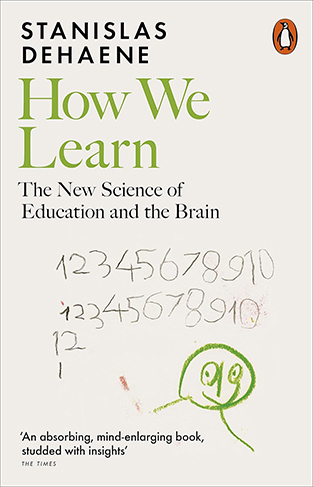
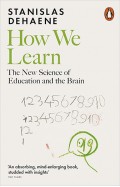
-120x187.jpg?q6)





